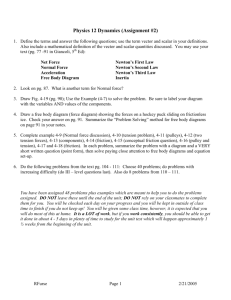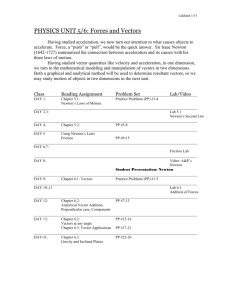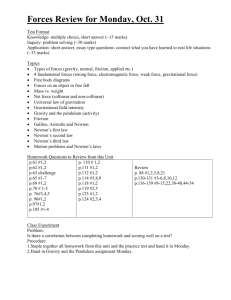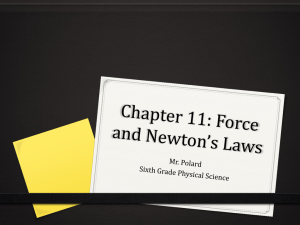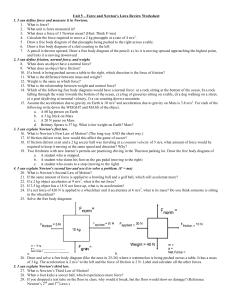Forces & Newton's Laws Checklist - SPH3U Physics
advertisement
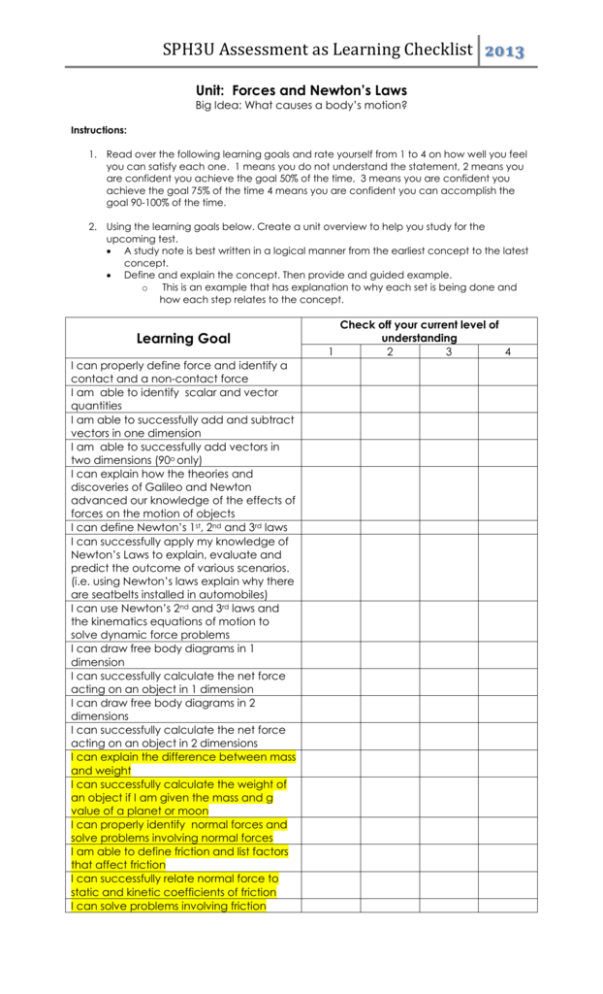
SPH3U Assessment as Learning Checklist 2013 Unit: Forces and Newton’s Laws Big Idea: What causes a body’s motion? Instructions: 1. Read over the following learning goals and rate yourself from 1 to 4 on how well you feel you can satisfy each one. 1 means you do not understand the statement, 2 means you are confident you achieve the goal 50% of the time, 3 means you are confident you achieve the goal 75% of the time 4 means you are confident you can accomplish the goal 90-100% of the time. 2. Using the learning goals below. Create a unit overview to help you study for the upcoming test. A study note is best written in a logical manner from the earliest concept to the latest concept. Define and explain the concept. Then provide and guided example. o This is an example that has explanation to why each set is being done and how each step relates to the concept. Learning Goal I can properly define force and identify a contact and a non-contact force I am able to identify scalar and vector quantities I am able to successfully add and subtract vectors in one dimension I am able to successfully add vectors in two dimensions (90o only) I can explain how the theories and discoveries of Galileo and Newton advanced our knowledge of the effects of forces on the motion of objects I can define Newton’s 1st, 2nd and 3rd laws I can successfully apply my knowledge of Newton’s Laws to explain, evaluate and predict the outcome of various scenarios. (i.e. using Newton’s laws explain why there are seatbelts installed in automobiles) I can use Newton’s 2nd and 3rd laws and the kinematics equations of motion to solve dynamic force problems I can draw free body diagrams in 1 dimension I can successfully calculate the net force acting on an object in 1 dimension I can draw free body diagrams in 2 dimensions I can successfully calculate the net force acting on an object in 2 dimensions I can explain the difference between mass and weight I can successfully calculate the weight of an object if I am given the mass and g value of a planet or moon I can properly identify normal forces and solve problems involving normal forces I am able to define friction and list factors that affect friction I can successfully relate normal force to static and kinetic coefficients of friction I can solve problems involving friction Check off your current level of understanding 1 2 3 4


